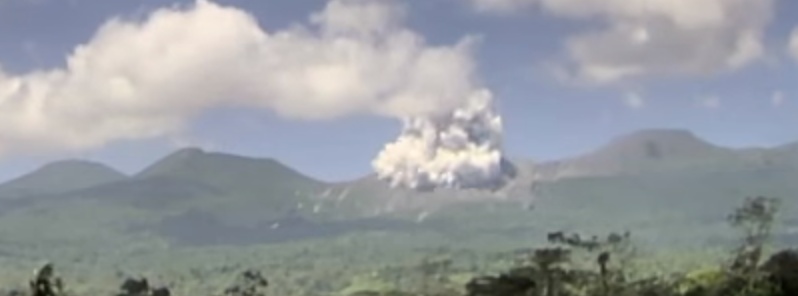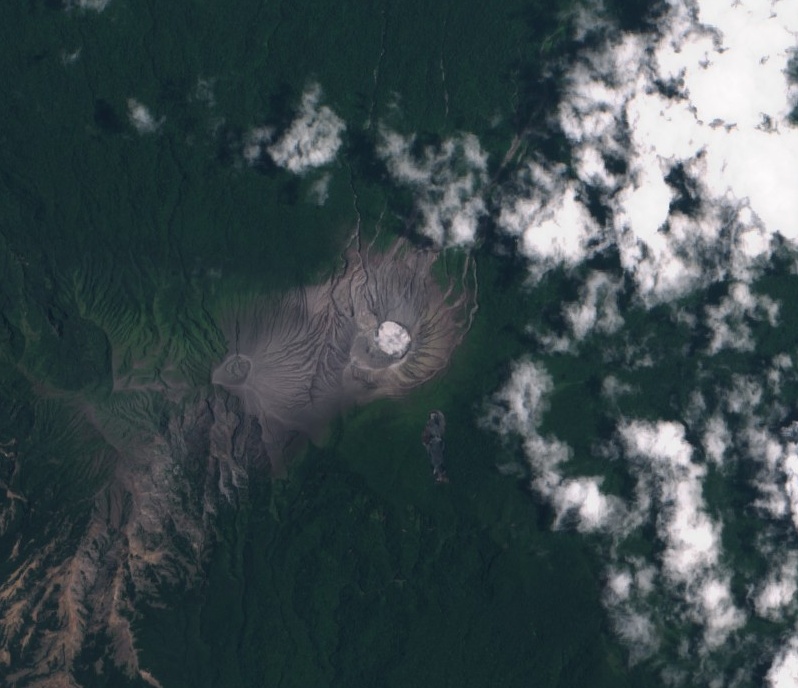Strong hydrothermal explosion at Rincon de la Vieja volcano, Costa Rica

A strong hydrothermal explosion took place at Costa Rica's Rincon de la Vieja volcano at 16:16 UTC (10:16 LT) on April 19, 2020.
According to OVSICORI-UNA, a steam and ash plume rose approximately 1 500 m (4 900 feet) above the crater. This is 3 416 m (11 200 feet) above sea level.
The eruption lasted approximately 1 minute.
Periodic hydrothermal explosions at the volcano were reported from April 8 to 14. A possible small eruption occurred on April 8 and was followed by a decrease in the amplitude of tremor signals.
A small-scale hydrothermal explosion was recorded by the infrasound and seismic networks lasting 20 seconds on April 11. Water and sediment was ejected onto the upper flanks of the volcano. The event was recorded by the webcam located in Sensoria, 4 km (2.5 miles) N of the crater.
In the morning local residents noted that the water in the Pénjamo River was milky white.
A small hydrothermal explosion on April 13 produced a plume of steam and gas that rose 500 m (1 640 feet).


Rincon de la Vieja volcano on April 18, 2020. Credit: Copernicus EU/Sentinel-2
Geological summary
Rincón de la Vieja, the largest volcano in NW Costa Rica, is a remote volcanic complex in the Guanacaste Range. The volcano consists of an elongated, arcuate NW-SE-trending ridge that was constructed within the 15-km-wide (9.3 miles) early Pleistocene Guachipelín caldera, whose rim is exposed on the south side.
Sometimes known as the "Colossus of Guanacaste," it has an estimated volume of 130 km3 (31 mi3) and contains at least nine major eruptive centers.
Activity has migrated to the SE, where the youngest-looking craters are located. The twin cone of 1 916 m (6 300 feet) high Santa María volcano, the highest peak of the complex, is located at the eastern end of a smaller, 5 km (3.1 miles) wide caldera and has a 500 m (1 640 feet) wide crater.
A plinian eruption producing the 0.25 km3 (0.05 mi3) Río Blanca tephra about 3 500 years ago was the last major magmatic eruption. All subsequent eruptions, including numerous historical eruptions possibly dating back to the 16th century, have been from the prominent active crater containing a 500-m-wide acid lake located ENE of Von Seebach crater.
This volcano is located within the Area de Conservación Guanacaste, a UNESCO World Heritage property. (GVP)
Featured image credit: OVSICORI-UNA

Commenting rules and guidelines
We value the thoughts and opinions of our readers and welcome healthy discussions on our website. In order to maintain a respectful and positive community, we ask that all commenters follow these rules.